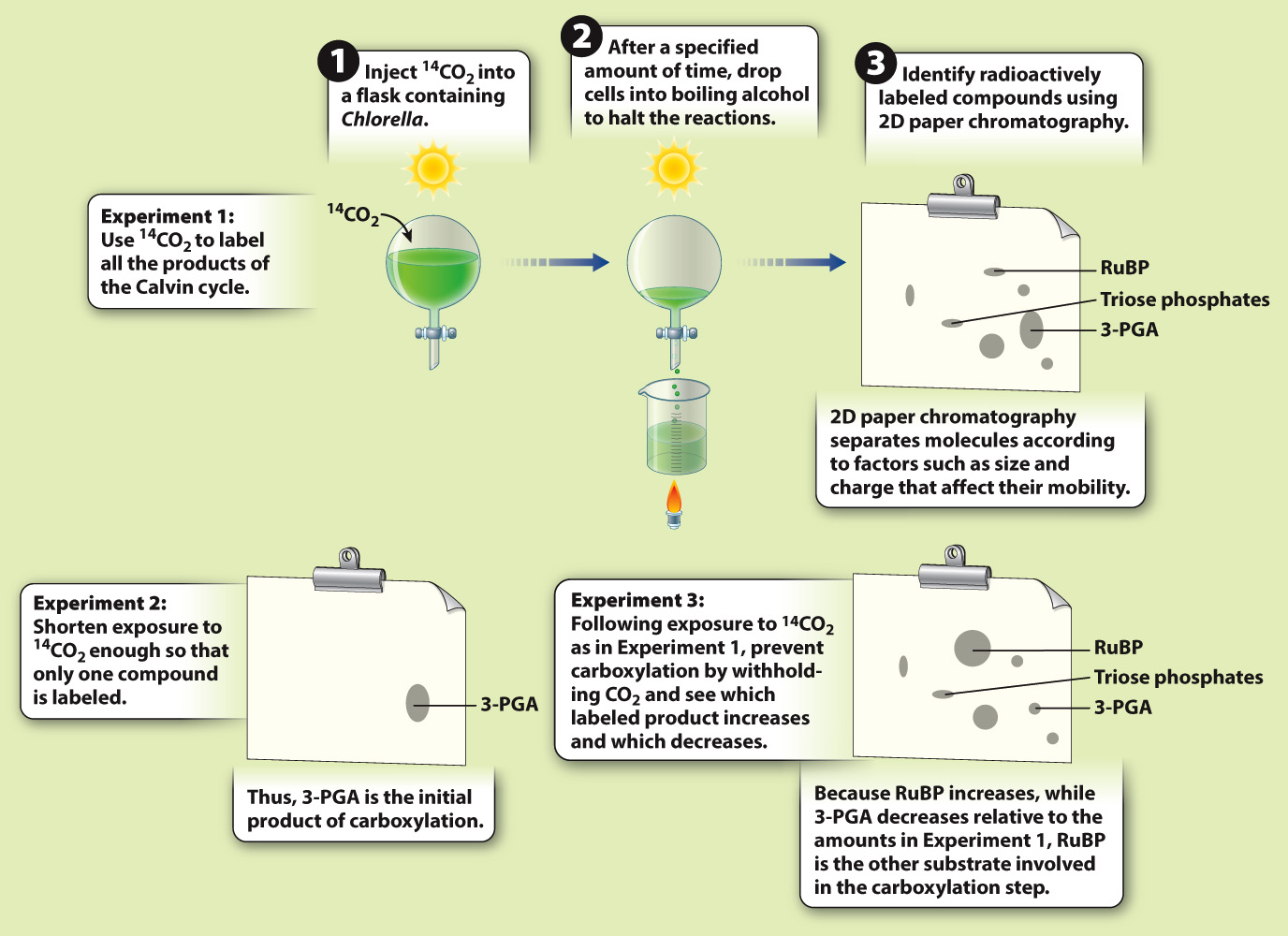The steps of the Calvin cycle were determined using radioactive CO2.
In a series of experiments conducted between 1948 and 1954, the American chemist Melvin Calvin and colleagues identified the carbon compounds produced during photosynthesis (Fig. 8.6). They supplied radioactively labeled CO2 (14CO2) to the unicellular green alga Chlorella and then plunged the cells into boiling alcohol, thereby halting all enzymatic reactions. The carbon compounds produced during photosynthesis were thus radioactively labeled and could be identified by their radioactivity (Experiment 1 in Fig. 8.6).
HOW DO WE KNOW?
FIG. 8.6
How is CO2 used to synthesize carbohydrates?
BACKGROUND In the 1940s, radioactive 14CO2 became available in quantities that allowed experiments. Melvin Calvin and Andrew Benson used 14CO2 to follow the incorporation of CO2 into carbohydrates.
EXPERIMENTS AND RESULTS

CONCLUSION The initial step in the Calvin cycle unites the 5-
FOLLOW-
SOURCE Calvin, M., and H. Benson. 1949. “The Path of Carbon in Photosynthesis IV: The Identity and Sequence of the Intermediates in Sucrose Synthesis.” Science 109:140–
Figuring out the chemical reactions that connected these labeled compounds, however, required additional experiments. For example, by using a very short exposure to 14CO2, Calvin and colleagues determined that 3-
To determine how 3-